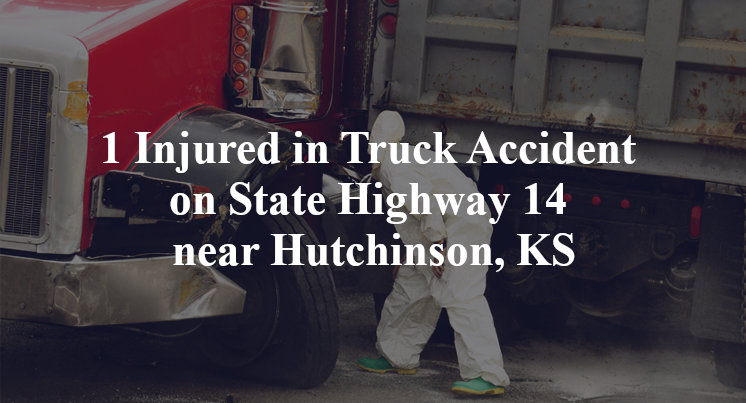1 Injured in Truck Accident on State Highway 14 near Hutchinson, KS
Reno County, KS — April 14, 2025, one person was injured in a truck accident at about 3 p.m. on State Highway 14 west of Hutchinson.
Authorities said a 2007 Lexus ES crashed head-on with a semi-truck near 11th Avenue. The truck, which was carrying hazardous agricultural material, caught fire after the crash.

The Lexus driver, a 69-year-old Wichita man, was extricated from the car as a grass fire moved toward the vehicle, according to authorities. He was hospitalized with serious injuries.
The truck driver was not injured.
Authorities have not released any additional information about the Reno County crash. The accident is still being investigated.
Commentary
When a semi-truck carrying hazardous materials catches fire after a head-on collision with a passenger vehicle, the situation goes far beyond the typical traffic accident.
Crashes involving hazardous cargo raise a different level of concern, not only because of the risk to the people involved but also because of the danger to nearby communities and the environment. The first question that has to be asked is how the collision happened, but equally important is why a truck carrying potentially flammable or toxic material ended up in a position where a fire could break out.
From a legal standpoint, investigators will need to determine whether the semi-truck was operating within its proper lane and whether the Lexus crossed the center line or attempted a maneuver that placed it in the truck’s path. That will likely be established by the usual forms of evidence — skid marks, debris patterns and vehicle positioning — as well as any dashcam or surveillance footage.
But once that question is answered, the focus shifts to the nature of the truck and its cargo. When a vehicle is carrying hazardous agricultural materials, the expectation is that it is equipped and maintained to minimize the risk of fire or explosion in the event of a crash. That includes reinforced fuel tanks, secure cargo containment and driver training specific to the type of material being transported. If a fire broke out quickly after the crash, that may point to vulnerabilities in how the vehicle was constructed or how the cargo was secured.
Emergency response is another issue that can’t be ignored. When a crash like this occurs in a rural area, response times can vary, and a grass fire moving toward a wrecked vehicle complicates an already dire situation. That kind of danger underscores why trucks carrying hazardous loads must be operated with the highest level of care and why route planning, vehicle readiness, and proper training are all essential.
Ultimately, this isn’t just a case of a head-on collision. It’s a reminder of what can happen when a hazardous cargo truck is involved in a crash: how quickly things can escalate, and how much is at stake. The investigation should focus not just on who crossed the center line, but on whether every reasonable step was taken to prevent the fire and contain the risk once the collision occurred. Because when you’re carrying hazardous material on public roads, the margin for error is razor thin.

“These are essential reads for anyone dealing with the aftermath of a truck wreck”– Attorney Cory Carlson